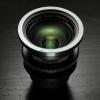Search the Community
Showing results for tags 'china ball'.
-
According to Larry Smith's interview on American Cinematographer : Kubrick framed Eyes Wide Shut in the standard 1.85:1 format, primarily using a set of Zeiss Superspeed T1.3 spherical prime lenses, but occasionally opting to employ Arri’s T2.1 variable prime lenses or a zoom. (...) The results of the two-stop force-development are clearly evident in the film’s FIRST major setpiece (...) The scene was lit almost entirely with a huge wall of ordinary Christmas lights (...) " They were very low-wattage (...) The effect is obviously enhanced by the force-developing, which made the lights appear to be much brighter than they were(...) "We decided to shoot nearly all of the picture at a stop of T1.3, and since we were pushing everything, we were able to create a wonderful warm glow. We also used a Tiffen LC-1 [low-contrast] filter for our night interior scenes, and the effect it produced is especially evident in the party sequence—it made the lights glow and gave everything a slightly surreal edge." Although the filmmakers used no additional lighting in wider shots of the party, Smith did modify his approach for close-ups of the actors, utilizing a China ball containing a dimmer-controlled 200-watt bulb. "The China balls were very useful if there was any movement in the scene, because they’re very light; we could just walk around with them and do anything we wanted. Normally, I only used a small amount of fill light when things began to get a bit murky, because I knew that the force-developing would give us the exposure level we needed For the scene in which the Hungarian FIRST approaches Alice, I created some fill with a smaller curtain of the Christmas lights." -So Larry Smiths says that they shoot nearly all of the picture at a stop of T1.3 ... And as we know the ballroom was low lighted so they should use the zeiss super speed T1.3 WIDE OPEN (f1.2) .. RIGHT?? -We also know that the Nicole Kidman's dance was shot with the Cooke Varotal 20-100 f2.8 T3.1 Note the word "FIRST" on Larry Smith phrase : "For the scene in which the Hungarian FIRST approaches Alice, I created some fill with a smaller curtain of the Christmas lights." The "first approache" is that shot which include a ZOOM IN around in the half of it's length : Then it cuts to a static shot with much more sharpness and longest Depth of Field And then, starts the dancing, which as i can figure out, it's a 360o rotation round the camera's tripod 1. So for the dancing they had the china ball ABOVE the CAMERA'S POSITION ?? 2. The need of the "small curtain" ONLY in the the "approache moment" ,was it beacouse of the "wide" open shot of the ZOOM LENS in the beggining ??? And china balls wasn't enough to "cover" the f2.8 of the Cooke zoom lens ??
- 1 reply
-
- Eyes wide shut
- Kubrick
-
(and 7 more)
Tagged with:
-
I oftne see DP's using china balls or space lights to bring up the ambient light in the room. Essentially, bouncing a light off the ceiling (I assume) does the same thing. I've been bouncing to bring up ambient but considering china balls. What are the advantages, if any, of using a china ball instead? Just that you have more control over the spill/throw by adding skirts? Is there any difference in the quality of light that is put out?
-
Hi So, I'm shooting a job next week on our in-house semi seamless background. Cameras: 2 (3)x Canon 5D3, would love to not go under F 4.0 since the shallow depth is a bit too much for me below that for this situation. The setup is 4 girls discussing a topic, seated in a couch and two chairs. The film will end up being in black and white, but I would like to light it as to get a slight drop off of the light from the girls to the background, to make them stand out. As you can see on the photos, we have quite a few rigging options, but I havent really figured out exactly what to do with lights. If keeping in mind the above; could I get a result like that by rigging up two space lights over each two girls? Maybe a bit in front of them...? I imagine the space lights would be easier to control and still give a relatively pleasing light. How powerful would you reckon those would need to be? And even with the space lights would I have to light them with another light? Maybe a fresnel relatively high up doing a sort of key for the one group while slightly rim lighting the other and vice versa. Or is it more feasible to rig up the 4 x 4 metre silk we have in an Arri frame and then hang a couple of blonds shooting down? This I imagine would force me to work a bit more with skirts and so on, to get some sort of drop off? Would love to hear other ideas! OH... the large light hanging in the ceiling is a soft box made for still life flash, so I'm not sure it would be able to handle the heat much less fit the fixtures inside :) Cheers
- 1 reply
-
- Spacelight
- china ball
-
(and 1 more)
Tagged with:





